As I mentioned the last time, crane means a kind of eternal life in ancient cultures of East Asia. As a kind of oriental mystical fairy bird which has thousands of years life, ancient people usually believe that the fairy will ride them fly to heaven. Even as demon character in the fairy tales, the crane played the most respectful and innocent roles. It definitely shows crane’s position in oriental aesthetics. Therefore, the crane related textiles are only supplied to royal families in ancient Asia is very reasonable to understand then.
The second post of “Snow Crane” series’ inspirations comes from Heian period(794-1185), which had the most poetic and peaceful social atmosphere in the entire Japanese history.
It is also the period when Buddhism, Taoism and Tang dynasty cultures influences were at their highest. The Heian period is also considered the peak of the Japanese imperial court and noted for its art, especially poetry and literature. One of the very first long romantic literature ” Genji Monogatari” was created in this era as well. Dressing many layers of kimonos is the Women’s style of this era. Unfortunately I don’t have many kimonos to put on, also I don’t have that such a smooth long hair to float. Maybe it is a kind of new modern way to show? Anyway, I am just happy to try more interesting styles based on different cultures on the planet!
Shirt by Issey Miyake
Skirt by Chanel Vintage
Two vintage kimono layers
Illustration by Nancy.Z
Photography by Dean.B
Inspiration
Heian Period’s Costume Style
Japanese classic novel“Genji Monogatari”
Heian painting style
Silk fukusa (gift cover) embroidered with a flight of cranes, Japan, 1800-50, Edo period.
collected by V&A museum.





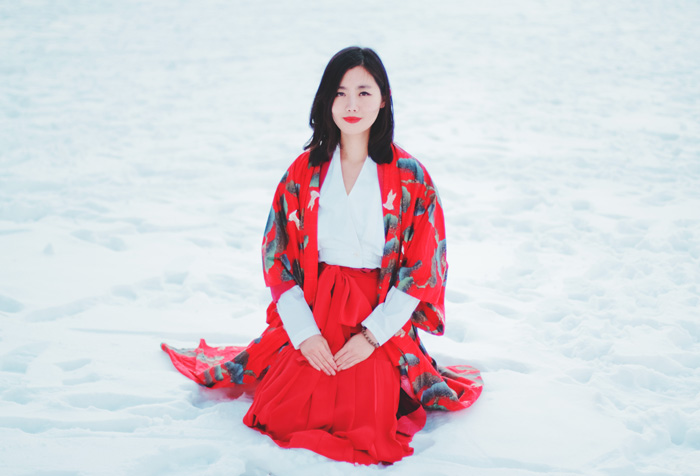








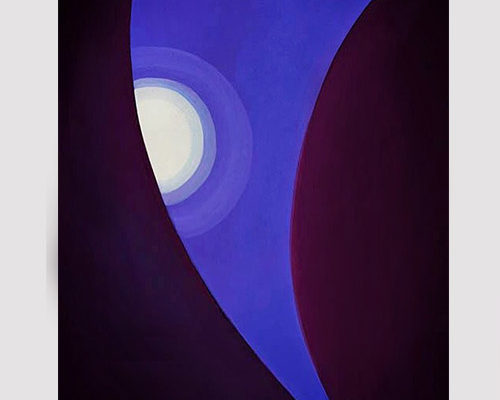
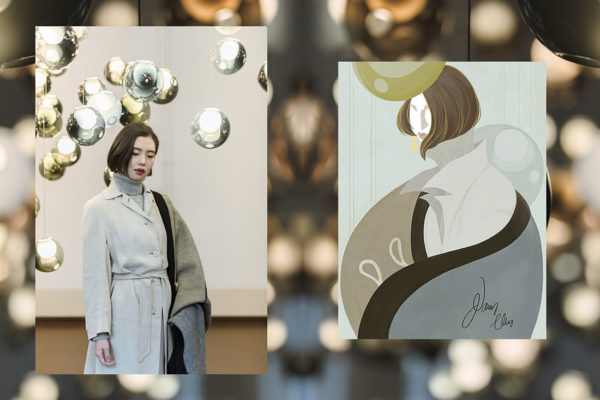
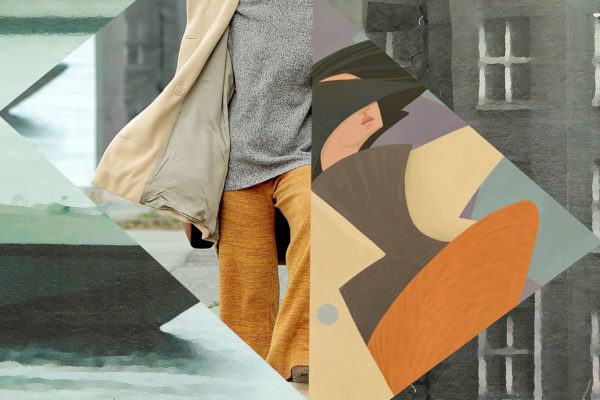
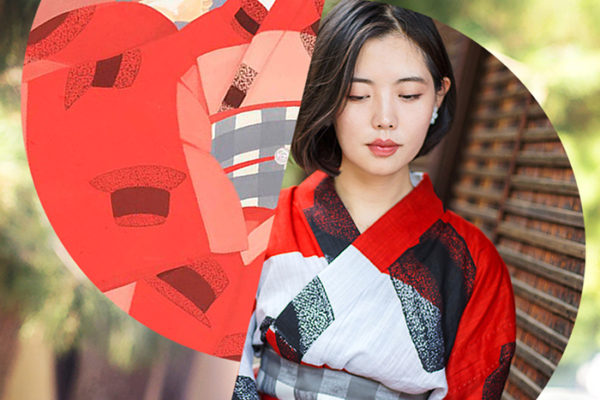
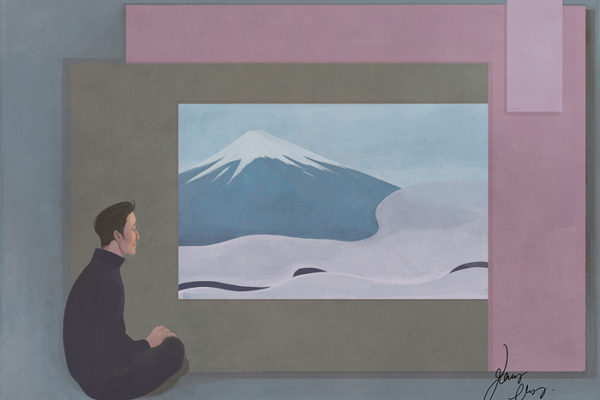
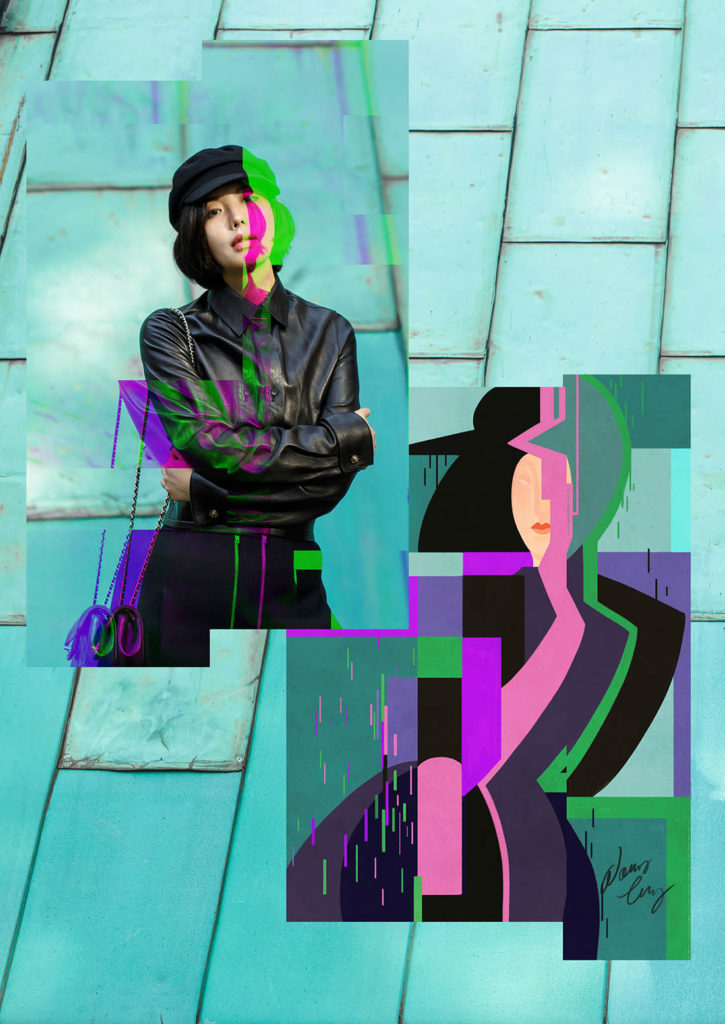

Louise Lam
The kimono is so pretty! I love it.
dreamdustx | Urban Decay Giveaway
Rosalinda Tjioe
Omg so stunning! x
http://rosalindatj.blogspot.com
Diva In Me
I realize that lately there’s a lot of designers that has been inspired by the eastern designs. Definitely interesting.
I like your kimono =)
Anaivilo
OMG this is so beautiful! Such a different culture than mine..so fascinating! I just love the photos and the prints! 😀
L.E.N
YOU ARE AN AMAZING CREATOR!
AS A JAPANESE I’M SO ENTICED BY THE WAY YOU WEAR A KIMONO SO ELEGANTLY!!!
LOVE YOUR BLOG, TOO. GLAD TO FIND HERE.
http://fetish-tokyo.blogspot.jp/
HOPE WE COULD FOLLOW EACH OTHER…
Ruby And Siel
I love the brightness of red in contrast with the pale white snow!
It’s always great to stumble on your blog and learn something about a culture so different from mine (like Anaivillo said). Most of the time I hear about the east from a Western view, so it’s nice to learn about it from you. 🙂 Keep going with those most interesting posts and amazing pictures!
Shug Avery
Your snow crane serie is really beautiful. I like how you learn us things as a great fan of Asia, I adore passing by your blog to read what you have to tell about the culture of this continent.
I went to Japan twice and I am fascinated by their kimonos and the work on them, I got to wear an Irotomesode , the type of kimono that were worn by married women, and a furisode, an other type of kimono but this time worn by young women of noble families. Wearing them was not for cosplaying, it was for me to understand how the body was in such clothes and also the signification of the motives on them.
So reading your post I remembered this wonderful experience I have there so thanks a lot !
Shug Avery of Incognito
http://www.thinkincognito-eng.blogspot.com
Tanya Mal
Amazing!
I love your interpretations, every time I learn something new 🙂